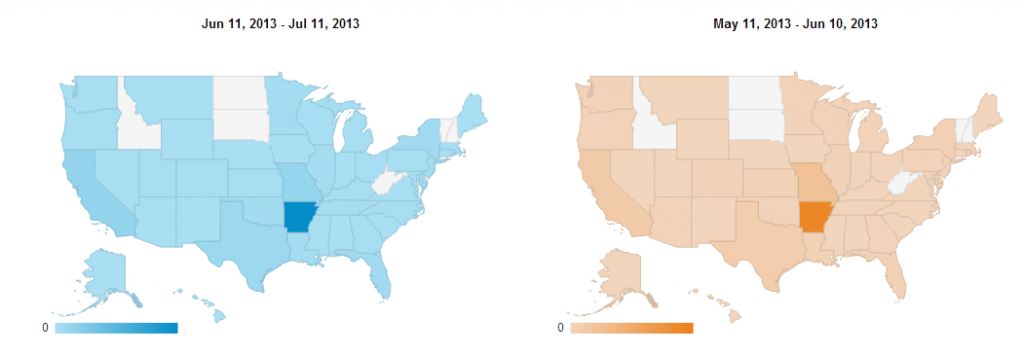Google Analytics is a must have step in building your online presence.
As mentioned in my previous posts on Google Analytics Metrics (part 1, part 2), there are many metrics that you can use to track your online results. Analytics uses data to find patterns, measure results and help make decisions about actions to achieve your goals.
This post covers the Demographics section of Google Analytics.
There are two subsections in the Demographics report, language and location.
1 – Your language is determined from your browser settings. When you visit a site, Google Analytics can request that information from the browser and determine the visitor’s preferred language. The codes are from one of two ISO specification (639, 3166). If you’re site is designed to have multiple languages like nwacaraccidentattorney.com, you can see which language is being viewed more and create more content for that language.
2 -Location information is provided by your ISP. Google Analytics can look up who your ISP is (Cox, Comcast, T-Mobile, etc.) and get an approximation of your location. You can do the same thing with sites like wheremyipaddress.com.
This method works well at isolating a location if you’re at home or at a business. However, mobile traffic is usually routed through a different region than your physical location. For example, if you live in Northwest Arkansas and have an AT&T iPhone, you’re probably being routed through Dallas, TX.
The initial location report is broken down by country. However, if you operate in the United States like Blue Zoo does, you can click on the name of the country and get a breakdown of traffic by state.
Since we’re in Fayetteville, Arkansas shows up as first on the list. Typically, you’ll see California, Texas and New York near the top of the list since they’re the most populous states. You will get random visitors from those states even if you’re a local company.
Once you get the list of states, you can select the state name and get a breakdown by city. If you’re trying to promote local businesses, this report will let you focus on the traffic that is closest to you physically. You can then get a better idea if your local online efforts are paying off.
If you need help interpreting Google Analytics or any of the various social media, mouse tracking, online ad tracking, or any of the other web metrics out there, please let Blue Zoo Creative know how we can help.
Measure your results for success.
